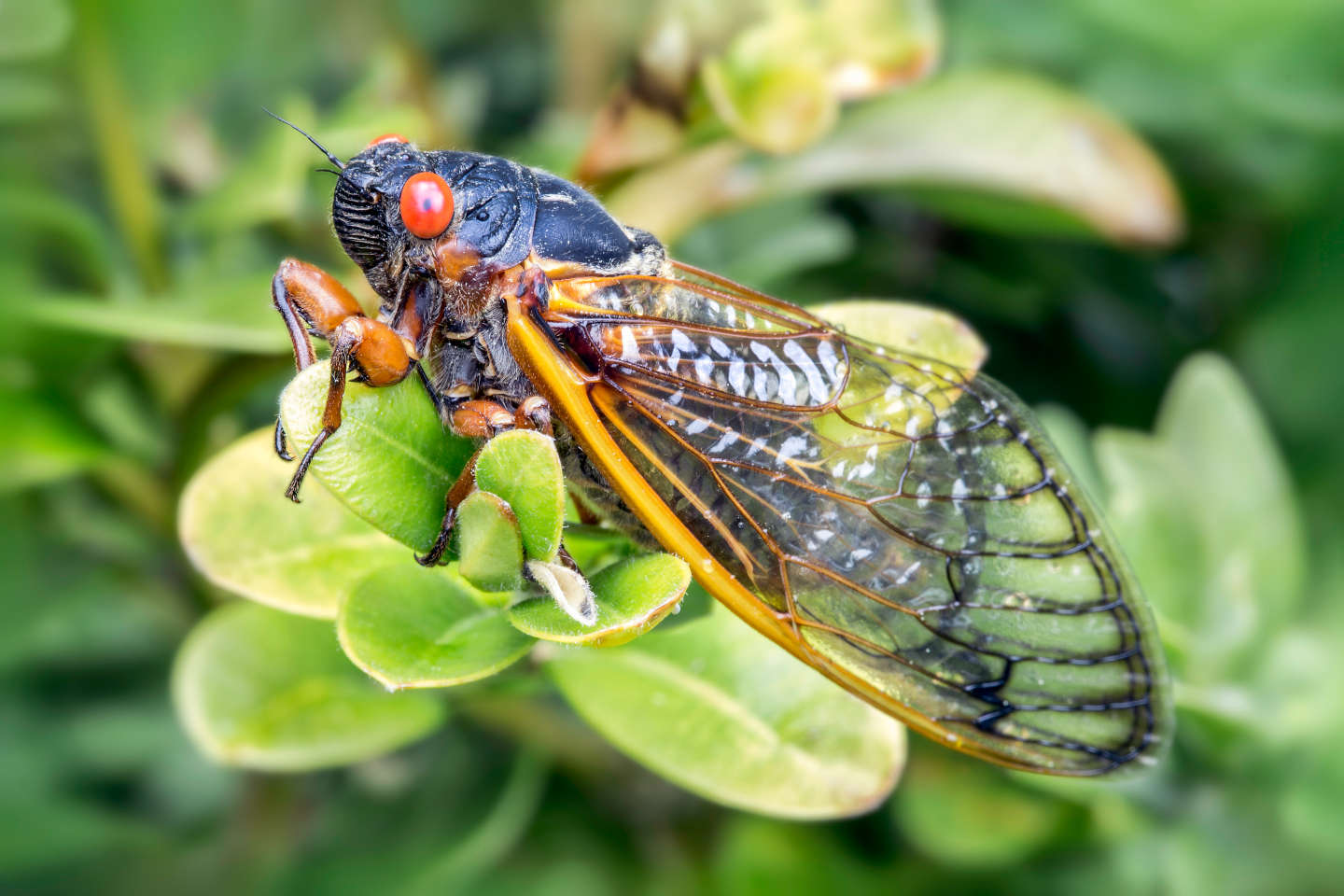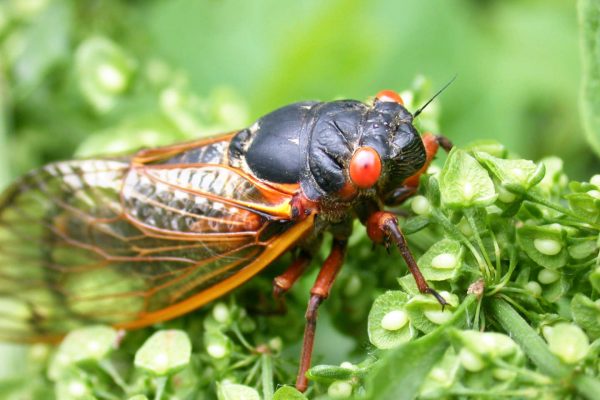
This article is by Greg Kitsock and originally appeared in the November/December 2004 issue of Zymurgy magazine.
In the Washington, D.C. area, every 17th spring belongs to the cicadas.
We’re not talking about your garden-variety annual cicadas whose chirruping can be heard on sultry July and August evenings. No, these cicadas belong to a species nicknamed Brood X. Most of their existence is spent underneath the earth, sucking the sap from tree roots. In the 17th year of their lives, they emerge in immense hordes—as many as a million insects per acre—and metamorphose into adults: inch-and-a-half long black bugs with red eyes and gold-laced veins in their wings.
For a few weeks in May and June, they engage in a frenzy of mating to propagate their species, buzzing annoyed pedestrians and littering the streets and sidewalks with their squashed carcasses. Their mating call—a high-pitched whine said to resemble the sound of phasers in the original “Star Trek” series—can drown out conversations. Then they disappear just as suddenly as they arrived, leaving behind their larvae to begin the cycle again.
A few folks draw inspiration from the insects. One musician composed a symphony in their honor. The Washington Post, in an article titled “Cicadas: The Other White Meat,” described the joys of munching on cicadas sautéed in butter.
One Arlington, Va. homebrewer even brewed a bug beer.
Cicada Beer Recipe

Why Not?
Steve Marler grew up in Simi Valley, Calif. (“where Ronald Reagan is lying now”), and moved to the D.C. area in 1988, one year too late to witness the last cicada invasion. He works for the U.S. Department of Labor, helping former Communist bloc nations make the transition to a free-market economy. (“I go on four to six trips a year. They actually have a brewpub in War- saw called Soma that’s pretty good,” he informs us.)
Marler has been homebrewing in his spare time for the last 11 years, and is currently a member of the D.C.-area club Brewers United for Real Potables. He’s no stranger to brewing weird beers—he once made a Worcestershire sauce ale—but has had more success in competitions with such traditional styles as double bocks.
Asked why he would choose cicadas as an adjunct, Marler answers that he got caught up in the excitement over the bugs and “I decided to mark the moment.”
His first step was to fill a quart jar with cicadas, about 75 insects in all. (Catching the cicadas is no problem. They have no fear of humans, which they seem unable to distinguish from trees.) “I collected them right after they had molted, before their shells hardened … I thought there would be less protein that way.”
But how do you prepare the bugs for the brew? Marler contacted David Gordon George, author of the Eat-a-Bug Cookbook. He was not able to provide much insight but thought it was a great idea. Marler also sought help from local beer authority Bill Madden, brewmaster and co-owner of Founders Brewpub in Alexandria, Va. Madden told him to forget about it.
Indeed, if you discount honey beers and cask ales (which are customarily fined with isinglass, a derivative of the swim bladders of certain sturgeon), very few brewers have experimented with animal byproducts in their beer. Andy Tveekrem of Dogfish Head Craft Brewery, when he worked for Great Lakes Brewing in Cleveland, once whipped up an “oyster stout-chunky style” by adding pureed bivalves to an imperial stout base. Boston Beer Co.’s Jim Koch dabbled with a 300-year-old recipe for “cock ale” by suspending several boiled chickens in the wort for a brown ale. And Kalamazoo Brewing Co. president Larry Bell added “Rocky Mountain oysters” (actually the testes of bulls or other barnyard animals) to a stout he made for the 2003 AHA conference.
However, none of those beers were sold commercially, and all of those adjuncts are consumed by humans in the normal course of affairs.
But really … an insect beer?
Bug Roast
Marler finally sought inspiration from the Post article, which stated that American Indians used to catch cicada and roast them over an open fire. So he smoked the bugs over applewood chips on his outdoor barbecue. He then added them to the mash, where they spent 60 minutes simmering.
Marler devised the recipe and brewing procedure to have as much significance as possible for cicada cognoscenti. He used 17 whole-hop additions to mark the cicadas’ life cycle. He shot for an IBU count of 87 to commemorate the year 1987, when Brood X last appeared. He aimed for an original gravity of 21 Plato to denote the year 2021, when the cicadas will once again emerge to mate. (The measured OG came close, attaining a value of 19.6.)
By May 22, Marler had accumulated enough cicadas to brew 12 gallons of barleywine, which he called CicadAle. He bottled half of the batch in June and the other half in August after giving it an additional dry hopping.
The initial reaction was somewhat negative. “One of my wife’s friends said, ‘Don’t ask me over for beer!’” recalls Marler. But as news spread, he became something of a beer celebrity. The Post printed a separate article on his homebrew. He was interviewed on a Denver radio station. “BeerAdvocate had 60 comments on my cicada beer,” he noted.
Marler also found out that Dan Listermann, a homebrewer from Cincinnati, Ohio, had attempted a cicada beer. “I picked them in the morning as they emerged from their shells and were still white without wings,” related Listermann, a member of the Bloatarian Brewing League. “I blanched and froze them. When I got better than a pound, I toasted them until they were crisp. To go into the mash, I ground them in a corona mill. For mashing I did a very extended protein rest of two hours.”
Listermann says the resulting brew (5 gallons of a pale ale) was “mostly boring.” He added, “While there are odd flavors, they are very subtle. I think that I overprocessed [the cicadas]. I figure that I have 17 years to think about the next time.”
Marler expects his barley wine to evolve in interesting ways over time. His original plan was to drink the cicada beer sparingly, savoring the last drops in 2021 when the cicadas return. He intended to enter it in one competition a year, but that may change as so many people have requested samples.
Greg Kitsock is editor of American Brewer and MidAtlantic Brewing News as well as a regular contributor to Zymurgy.



Share Post